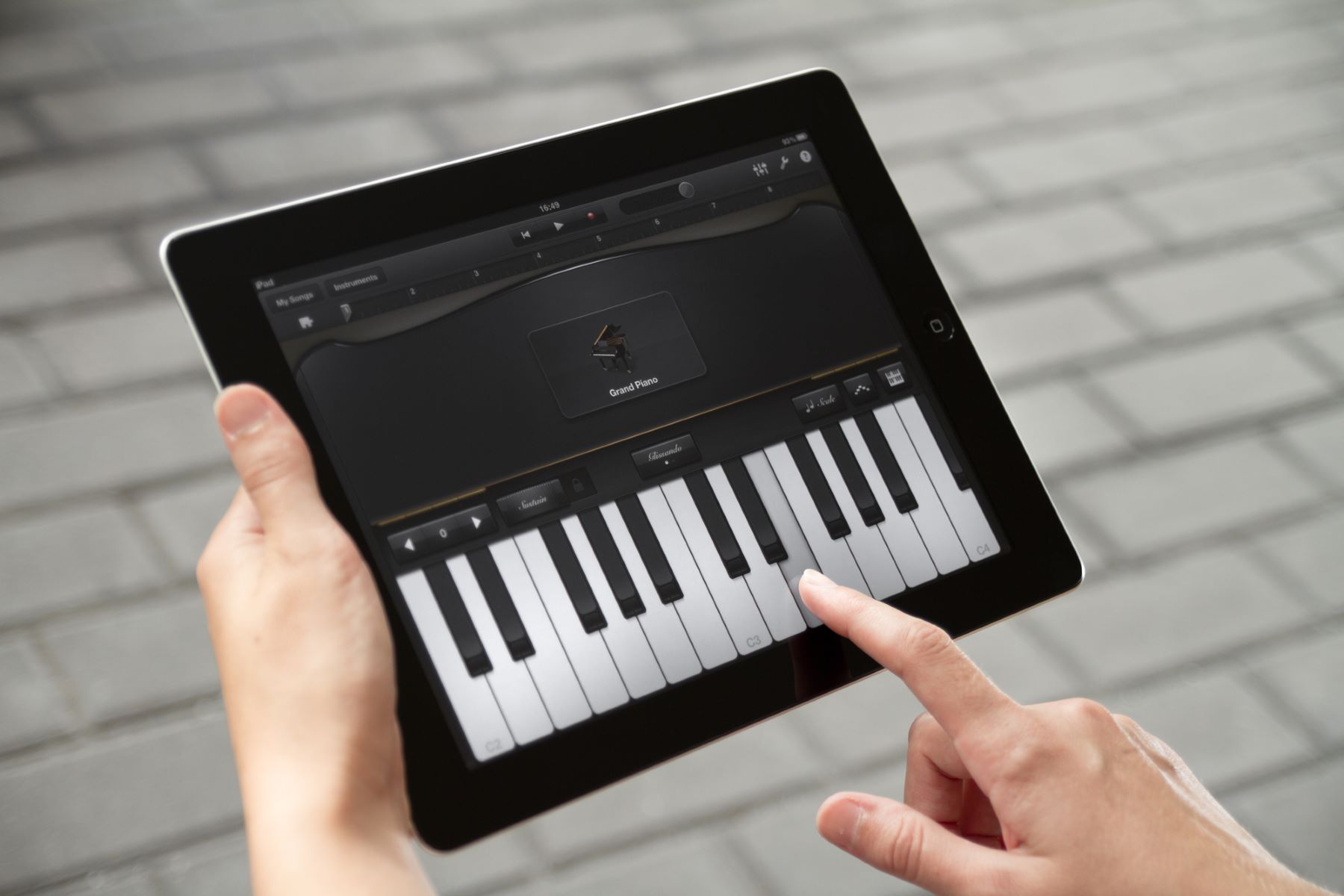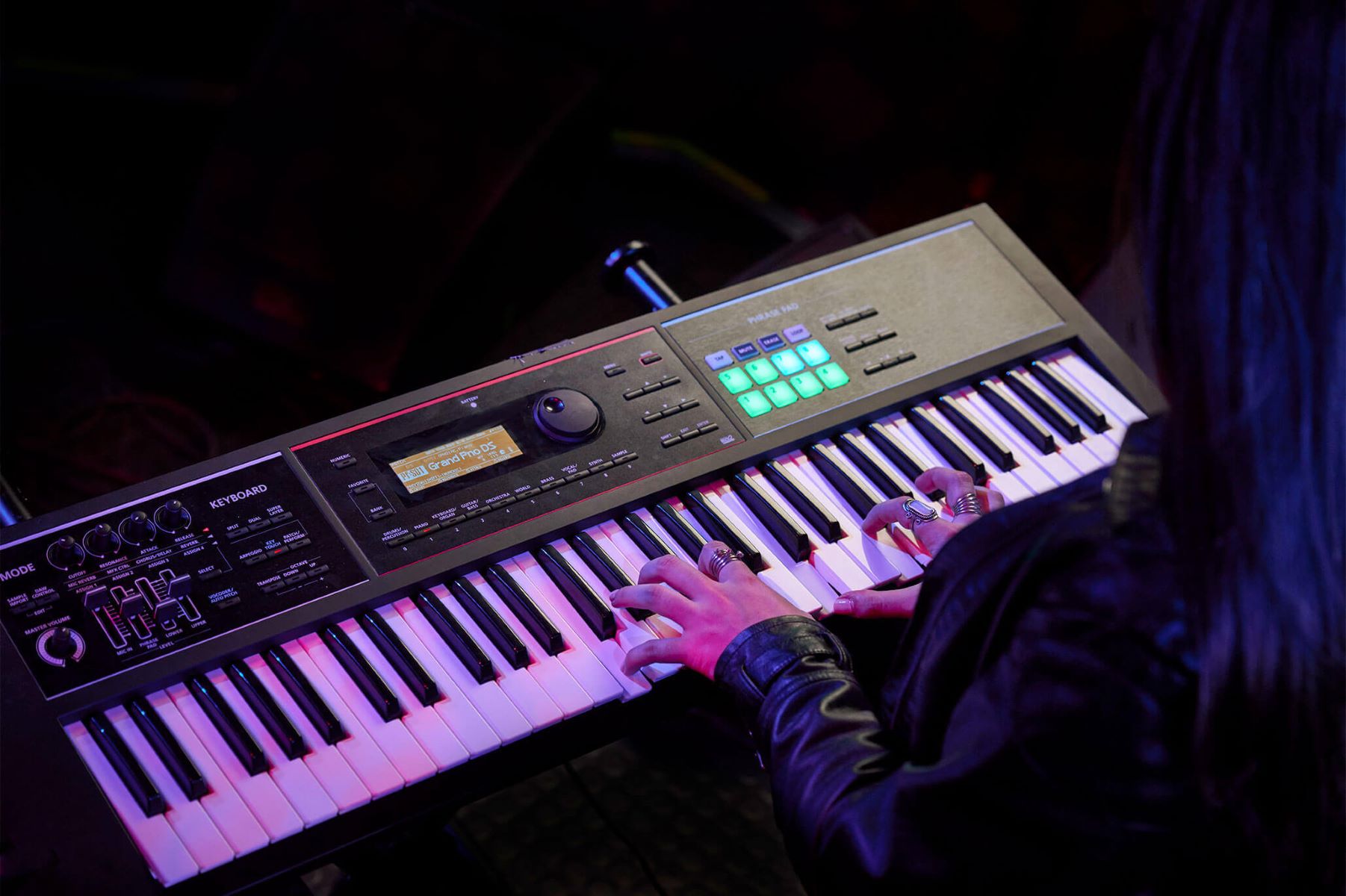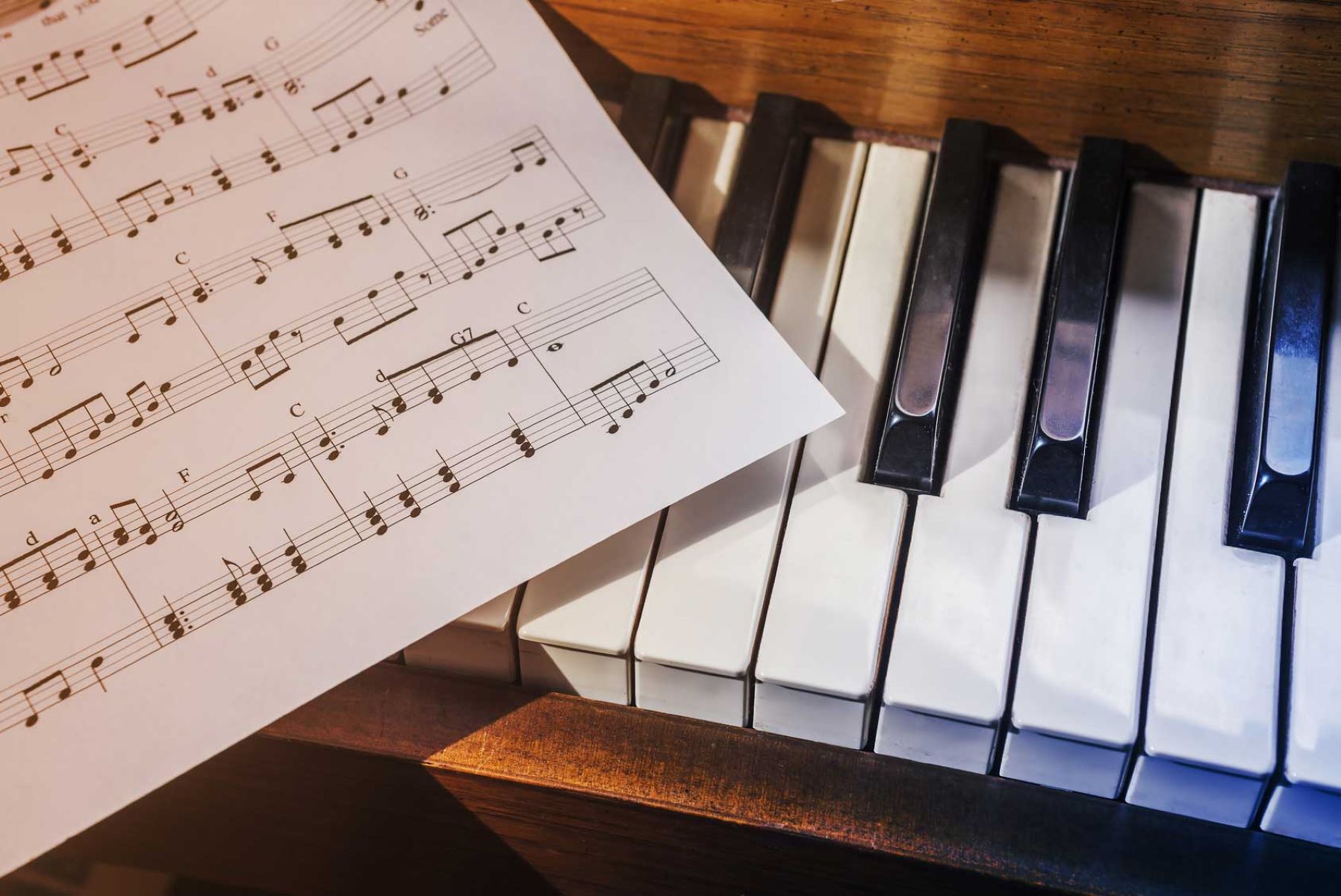Home>Instruments>Piano>How To Learn Piano Without A Piano


Piano
How To Learn Piano Without A Piano
Published: February 9, 2024
Learn how to master the piano without owning one. Discover effective techniques and resources for learning piano anywhere, anytime. Start your musical journey today!
(Many of the links in this article redirect to a specific reviewed product. Your purchase of these products through affiliate links helps to generate commission for AudioLover.com, at no extra cost. Learn more)
Table of Contents
Introduction
So, you want to learn how to play the piano but don't have access to one? Don't worry; you can still start your musical journey without a physical piano. Whether you're a complete beginner or a seasoned musician looking to expand your skills, there are various ways to learn and practice the piano without owning the traditional instrument. In this article, we'll explore different techniques and resources that will allow you to develop your piano skills, even if you don't have immediate access to a piano.
Learning to play the piano can be a rewarding and enriching experience. It not only enhances your musical abilities but also offers numerous cognitive and emotional benefits. From improving hand-eye coordination to boosting creativity and self-expression, the piano is a versatile instrument that can positively impact various aspects of your life.
While having a traditional piano or keyboard is ideal for learning, it's not always feasible for everyone due to space, budget, or other constraints. However, thanks to modern technology and innovative learning methods, aspiring pianists can now embark on their musical journey using alternative approaches.
In the following sections, we will delve into the fundamentals of piano playing, explore virtual resources and applications, and provide tips for honing your skills without a physical piano. By the end of this article, you'll have a comprehensive understanding of how to kick-start your piano education, even in the absence of a traditional instrument. So, let's begin this melodious adventure and discover the world of piano learning, no piano required!
Understanding the Basics of Piano
Before delving into the specifics of playing the piano, it’s essential to grasp the fundamental elements of this timeless instrument. The piano consists of 88 keys, encompassing both white and black keys. Each key represents a musical note, and understanding the layout of these keys is crucial for navigating the instrument.
Without a physical piano, you can still familiarize yourself with the layout of the keys by utilizing online resources that simulate the piano keyboard. These virtual keyboards provide a visual representation of the piano, allowing you to understand the arrangement of notes and the corresponding finger placements.
Additionally, familiarizing yourself with the terminology associated with the piano is vital. Concepts such as octaves, chords, scales, and intervals form the building blocks of piano music. Online tutorials and interactive lessons can aid in comprehending these concepts, providing a solid foundation for your piano education.
Understanding the basics of piano playing also involves learning about posture, hand positioning, and proper finger techniques. While you may not have a physical piano to practice on, you can simulate hand movements and finger placements to develop muscle memory. This can be achieved by mimicking the actions on a flat surface, focusing on finger strength and dexterity.
Furthermore, listening to piano music attentively can enhance your understanding of the instrument. Paying attention to the nuances of various compositions, identifying different musical styles, and recognizing the role of the piano in different genres can deepen your appreciation for the instrument, even in the absence of direct physical interaction.
By comprehending the fundamental aspects of the piano, including its layout, terminology, and playing techniques, you can lay a robust groundwork for your musical journey. Embracing these foundational elements will prepare you for the next steps in your piano learning process, setting the stage for a fulfilling and enriching experience with this timeless instrument.
Learning Music Theory
Music theory forms the backbone of understanding how music is constructed, and it is an essential component of learning to play the piano. Without a physical piano, you can still delve into music theory to broaden your knowledge and deepen your appreciation for the art of piano playing.
Begin by familiarizing yourself with the basic elements of music theory, including notes, scales, intervals, and chords. Online resources and interactive tutorials offer a wealth of information on these topics, allowing you to grasp the theoretical underpinnings of piano music.
Understanding the concept of rhythm is also crucial in music theory. You can explore rhythm patterns, time signatures, and rhythmic notation to internalize the rhythmic aspect of piano music. Additionally, studying the principles of melody and harmony will enrich your understanding of musical composition, enabling you to interpret and appreciate piano pieces more profoundly.
Furthermore, delving into the theoretical aspects of music can enhance your listening skills. By analyzing different musical compositions and identifying theoretical elements within them, you can develop a discerning ear for music, which is invaluable for aspiring pianists.
While music theory may seem daunting at first, approaching it systematically and gradually immersing yourself in its principles can yield profound benefits for your piano learning journey. By cultivating a solid foundation in music theory, you’ll not only enhance your piano skills but also gain a deeper insight into the intricate world of musical expression.
Practicing Finger Exercises
Developing dexterity and strength in your fingers is essential for mastering the piano, and you can start honing these skills even without direct access to a piano. Various finger exercises can be practiced away from the instrument to enhance finger flexibility and coordination.
One effective finger exercise involves practicing finger tapping and individual finger movements on a flat surface. By simulating piano playing motions, you can strengthen your fingers and improve their agility. Additionally, squeezing a stress ball or using hand grip strengtheners can help build finger strength, which is beneficial for piano playing.
Another valuable exercise is finger stretching. You can gently stretch and flex your fingers to improve their range of motion and flexibility. This can be done regularly to prevent stiffness and promote finger nimbleness, contributing to improved piano performance once you have access to a physical instrument.
Furthermore, finger independence exercises are instrumental in developing the ability to control individual fingers effectively. Practicing simple finger independence drills, such as tapping out different rhythms with each finger, can enhance coordination and precision, laying a strong foundation for future piano proficiency.
Engaging in these finger exercises consistently, even without a piano, can yield tangible benefits when you eventually transition to playing on a physical instrument. By dedicating time to finger strengthening and dexterity exercises, you’ll be better prepared to tackle the technical demands of piano playing, setting the stage for a more seamless and enjoyable learning experience.
Utilizing Virtual Piano Apps and Websites
While you may not have access to a traditional piano, the digital age offers a plethora of virtual resources that can serve as effective alternatives for learning and practicing the piano. Virtual piano apps and websites provide interactive platforms through which you can engage with the instrument, hone your skills, and explore the world of piano music.
Virtual piano apps, available for smartphones and tablets, simulate the experience of playing a real piano. These apps feature touch-sensitive keys that respond to your input, allowing you to practice finger placement, play melodies, and familiarize yourself with the layout of the piano keyboard. Additionally, many virtual piano apps offer tutorials, interactive lessons, and gamified learning experiences, making the process of learning piano engaging and enjoyable.
Online piano websites also offer virtual keyboards that can be accessed through web browsers. These platforms provide a range of features, including customizable keyboard layouts, recording capabilities, and access to a diverse repertoire of musical pieces. Some websites even offer social components, enabling users to connect with fellow learners, share performances, and receive feedback from a community of piano enthusiasts.
Moreover, virtual piano apps and websites often incorporate educational tools such as note recognition exercises, rhythm training, and music theory lessons, empowering users to develop a comprehensive understanding of piano playing. These resources can be particularly valuable for beginners, as they provide a structured approach to learning the piano, even in the absence of a physical instrument.
By embracing virtual piano apps and websites, you can embark on your musical journey, nurture your passion for the piano, and build a strong foundation for future piano playing. These digital platforms offer a gateway to the world of music, enabling you to cultivate your skills and ignite your creativity, all within the digital realm.
Studying Piano Sheet Music
Delving into piano sheet music is a pivotal aspect of mastering the instrument, and you can begin familiarizing yourself with musical notation and scores even without direct access to a piano. Piano sheet music serves as a roadmap for musicians, providing a visual representation of musical compositions and guiding performers through the intricacies of a piece.
Start by acquainting yourself with the basics of musical notation, including note values, time signatures, and key signatures. Online resources offer tutorials and guides that elucidate these fundamental elements, enabling you to interpret and understand piano sheet music effectively.
Furthermore, exploring different genres and styles of piano music through sheet music can broaden your musical horizons. Whether it’s classical compositions, contemporary pieces, or popular songs arranged for the piano, studying diverse sheet music exposes you to a rich tapestry of musical expression, fostering a deeper appreciation for the versatility of the instrument.
Additionally, analyzing piano scores and following along with recordings of the pieces can enhance your understanding of musical phrasing, dynamics, and expression. This immersive approach allows you to internalize the nuances of piano music, even in the absence of a physical instrument, laying the groundwork for future performances.
Moreover, engaging with piano sheet music cultivates essential skills such as sight-reading and music interpretation. By regularly perusing scores and envisioning the musical elements, you can sharpen your ability to interpret and perform pieces with confidence and artistry once you have access to a piano.
Embracing the world of piano sheet music, even without immediate access to a physical instrument, sets the stage for a fulfilling and enriching musical journey. By immersing yourself in the realm of musical notation and scores, you’ll develop a nuanced understanding of piano music, paving the way for future exploration and growth as a pianist.
Conclusion
Embarking on the journey to learn the piano without immediate access to a physical instrument is an opportunity to cultivate a deep understanding of the instrument and lay a strong foundation for future musical endeavors. By exploring the basics of piano playing, delving into music theory, and engaging with virtual resources, aspiring pianists can hone their skills and nurture their passion for music, even in the absence of a traditional piano.
Understanding the layout of the piano keys and familiarizing oneself with music theory principles form the building blocks of a comprehensive piano education. Through virtual piano apps and websites, individuals can immerse themselves in interactive learning experiences, honing their skills and exploring the nuances of piano music in a digital space.
Practicing finger exercises away from the piano and studying piano sheet music further enriches the learning process, fostering dexterity, musical interpretation, and a nuanced understanding of musical notation. These foundational elements collectively contribute to a well-rounded and immersive piano learning experience, setting the stage for a seamless transition to playing on a physical instrument in the future.
Ultimately, learning the piano without a piano is not merely a temporary workaround; it is an opportunity to develop a deep connection with the instrument, nurture a profound appreciation for music, and lay the groundwork for a fulfilling musical journey. By embracing the wealth of resources available in the digital landscape and immersing oneself in the theoretical and practical aspects of piano playing, aspiring pianists can embark on a melodious adventure that transcends the limitations of physical access to an instrument.
So, whether you’re tapping out melodies on a virtual keyboard, delving into music theory concepts, or studying intricate piano scores, remember that the journey to learn the piano begins in the heart and mind, transcending the boundaries of physical space. With dedication, curiosity, and a passion for music, the absence of a physical piano becomes a mere footnote in the symphony of your musical growth.











